29 Convincing Reasons To Visit Japan
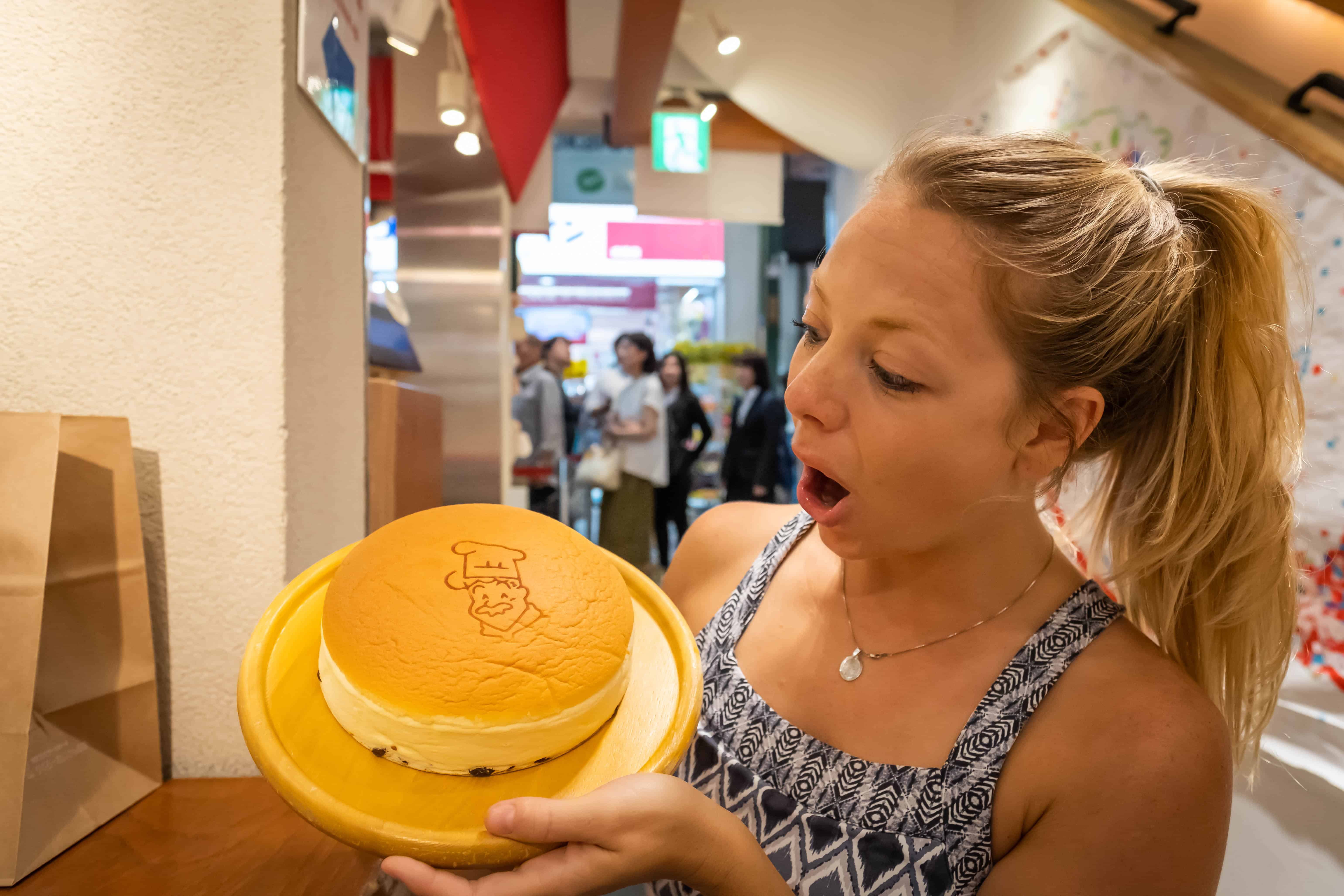
If I were forced to pick a favorite country to travel to, Japan would have to be it. We often think about the idea as every person we talk to asks about our favorite country, and I try to convey quickly all the reasons to visit Japan.
Not that it is a secret, but I’ve noted numerous times on this travel blog that I love to travel to Japan. This explains why I plan to return to the Land of the Rising Sun year. I’m not alone. Countless friends, videos, documentaries, articles, and others genuinely feel the joys of traveling in Japan.
Why is Japan such a great place to visit, and why visit Japan at all? What draws me back from spending all my savings on sushi and sake? Here are just a few of the fantastic reasons to visit Japan.
Why Visit Japan?
1. Respectful People

Number one, when questioned, “why visit Japan?” is for the people! The Japanese are well known for being extremely polite. After traveling to 80+ countries, I can honestly say that the Japanese are among the most courteous people in the world.
While most Japanese do not have strong English skills, they still welcome foreigners in their land. It’s common for them to provide help and exhibit compassion towards visitors.
I’ve had numerous instances of Japanese coming up to me to practice their English and assist in any way they can. I’ll never forget when I had a local man in Tokyo run up to me at the train station and ask if he could accompany me to dinner to be helpful and converse.
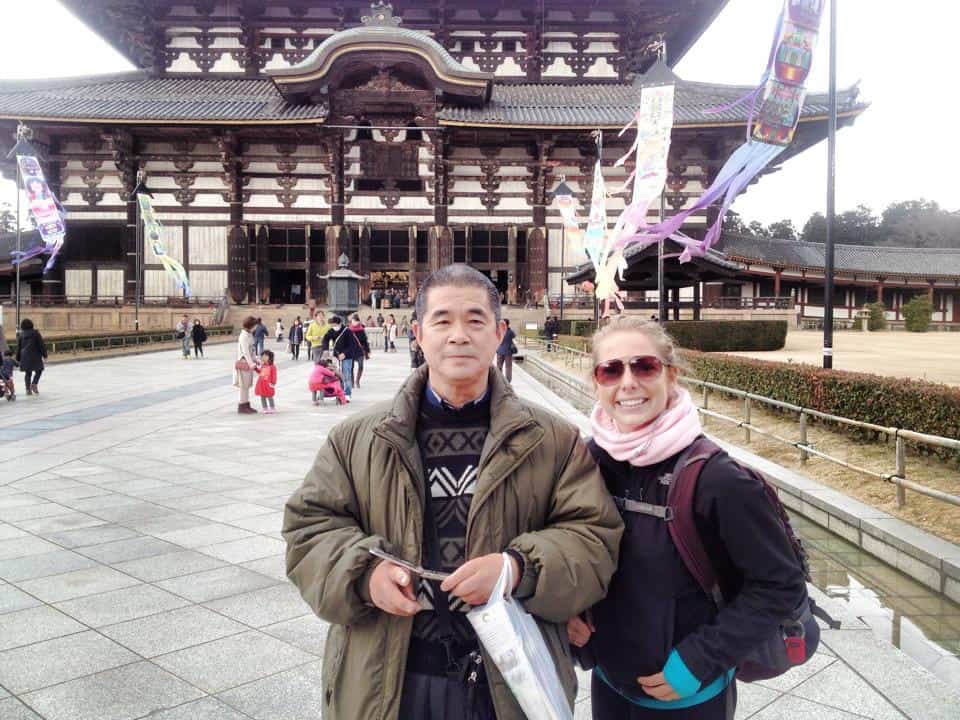
The thought of a Japanese individual being rude, aggressive, or violent is rare as it is against their cultural norms and society. If they don’t seem the friendliest, it’s likely they cannot understand you and don’t want to be embarrassed for their inability to help you as it is considered rude. This will likely only be the case in rural parts of Japan and with older people. Just show them a smile and say a few words of Japanese – it goes a long way!
2. The Food
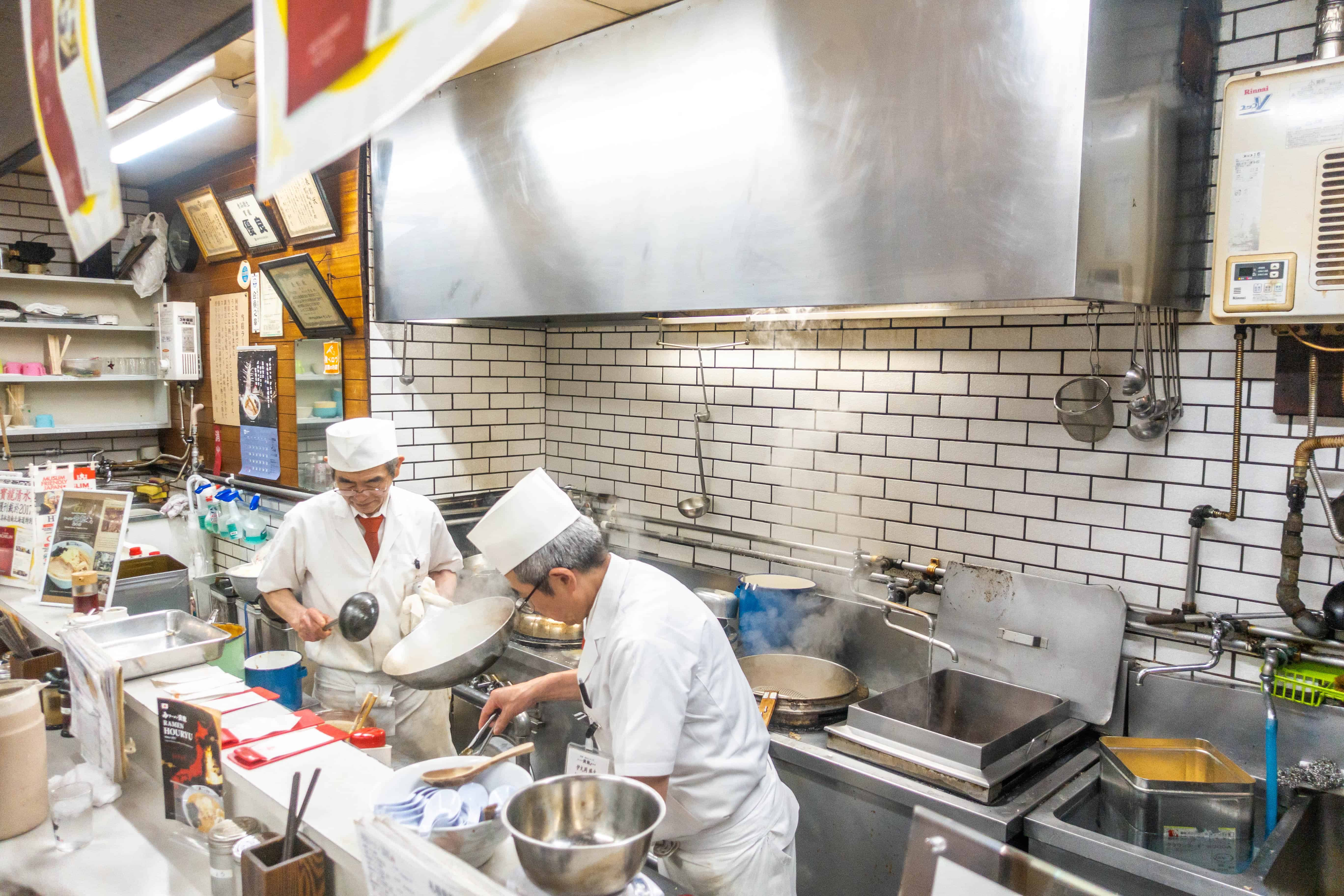
Ever since I was in high school and tried sushi for the first time, I fell in love with Japanese food, at least what I thought was Japanese food. On my first trip to Japan, I set out to find and eat at every sushi restaurant possible. Then I realized there is so much more to Japanese food than sushi! My next find would be Ramen.

Ramen is now a favorite of mine, and it’s a Japanese staple known for being cheap that locals always eat. Personally, there is nothing better than a hot bowl of ramen on a cold winter day in Japan.
The famous noodle soup dish usually has noodles, tomago, moyashi, seaweed, and pork in the world’s most delicious broth. Each region and even city has its style of ramen, and they come in a wide variety of styles such as Shoyu, Shio, and Miso.
Don’t let the food end with ramen and sushi because there is so much more depth. Japanese food is varied; there are many classic dishes and styles like yakitori, okonomiyaki, Japanese curry, tempura, bento, yakiniku, miso, udon, soba, and donburi.
What makes Japanese food so special is attention to detail food is made with care while highlighting beautiful ingredients. There is no haphazard canned or overcooked food here; it’s almost all beautiful and fresh.
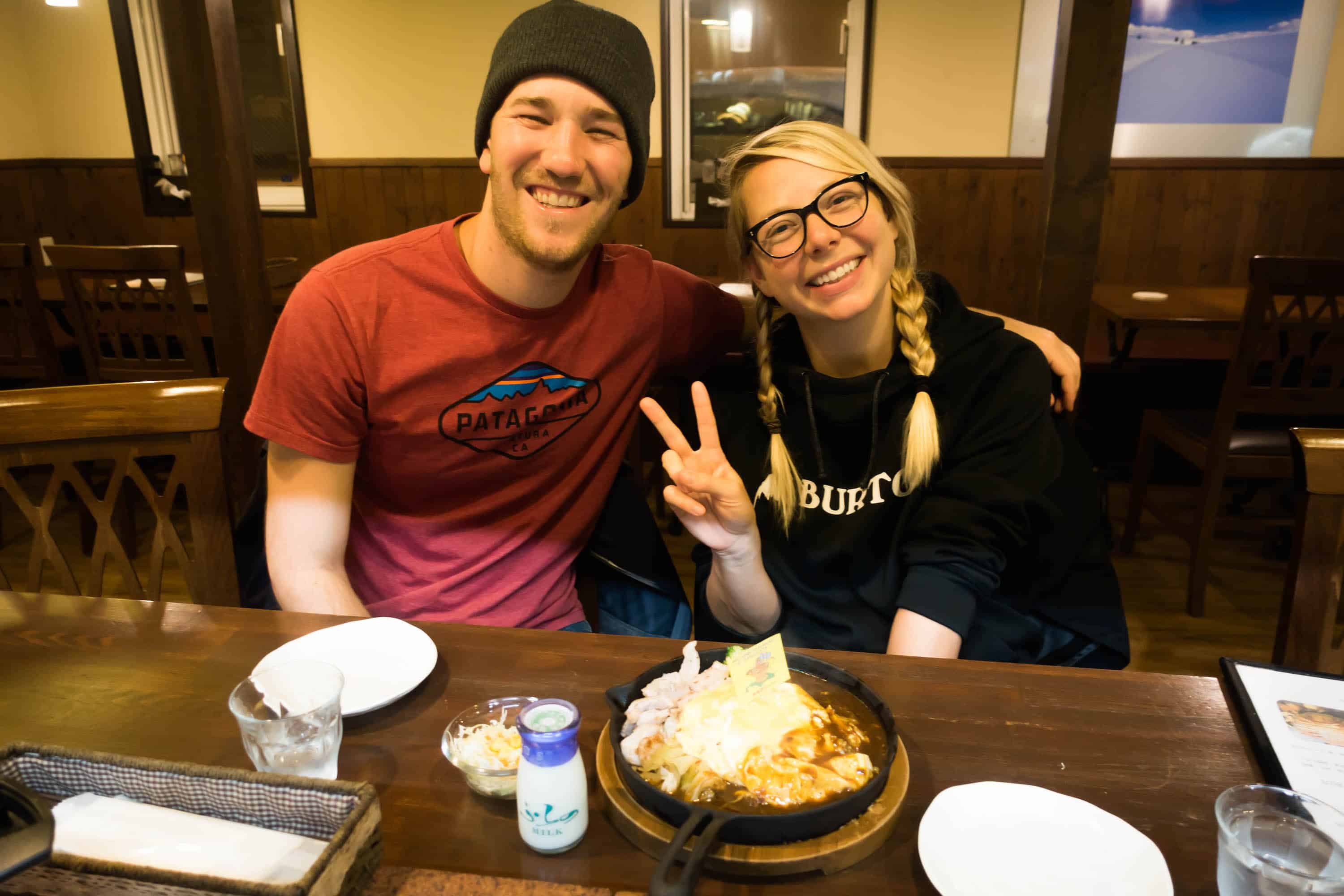


3. The Service

Another reason why I love to travel to Japan is for the fantastic service! Although tipping pretty much does not exist in Japan, the service is some of the best in the world. Every sushi, udon, ramen, Izakaya restaurant has top-notch service, and it’s not because they expect you to tip them, but because Japan is a service-oriented country.
If you tip and leave a few Yen on your table, it will likely result in your waiter running after you to give it back. It’s considered an insult to leave a tip throughout most of Japan, so enjoy getting top-notch service without paying extra.
4. The Sushi Trains
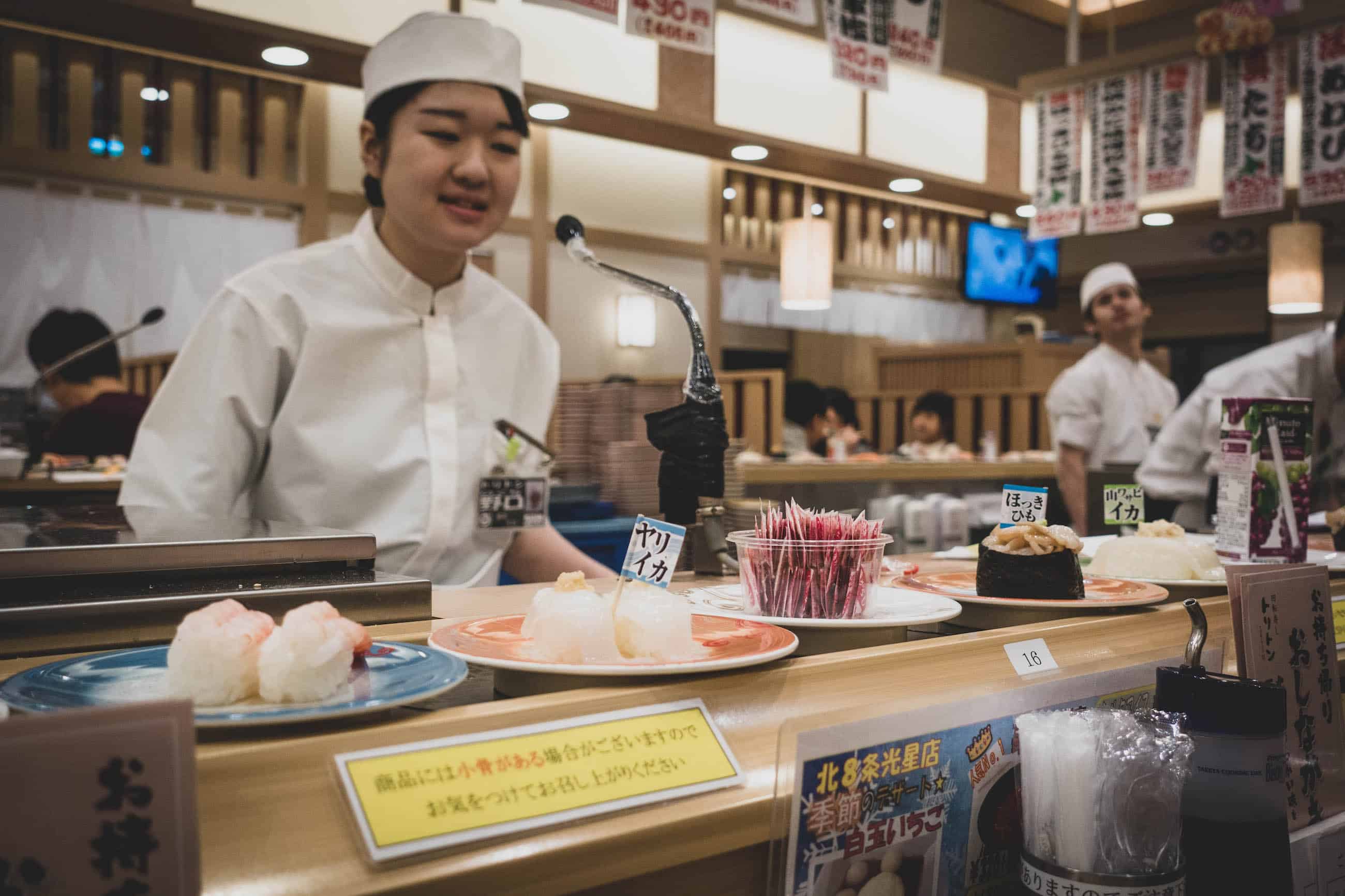
While sushi is probably a unique and expensive meal out where you live, you can find it for an affordable price in Japan. Of course, there are costly world-class options, but almost every decent-sized town and city in Japan has a conveyor belt sushi.
Conveyor belt sushi is a quick and cheap meal in Japan. Sushi is made and sent out onto a train like a conveyor belt rotating around the restaurant. Guests can grab what they please, and then at the end of the meal, the waitress will come to tally up the plates to give a total for the meal.
The plates are different colored, and the higher grade sushi goes on more expensive dishes, all color-coded. Typically you can get two pieces of nigiri for ¥100 to ¥200, and then the prices go up depending on the fish cut.
You can easily walk out of a sushi conveyor belt meal feeling stuffed with high-quality fish for under ¥1500. That’s the price of mediocre sushi in the United States!
5. The Sake

This is one of the best reasons to visit Japan! Sake is alcoholic Japanese rice wine. It is delicious, and if you have never had it, I urge you to order a carafe, or tokkuri, next time you see it on a menu.
Sake is Japan’s national beverage and is often served on special occasions in the tokkuri, a small porcelain bottle, and then poured and sipped from a sakazuki. You can either have sake chilled, warm, or room temperature.
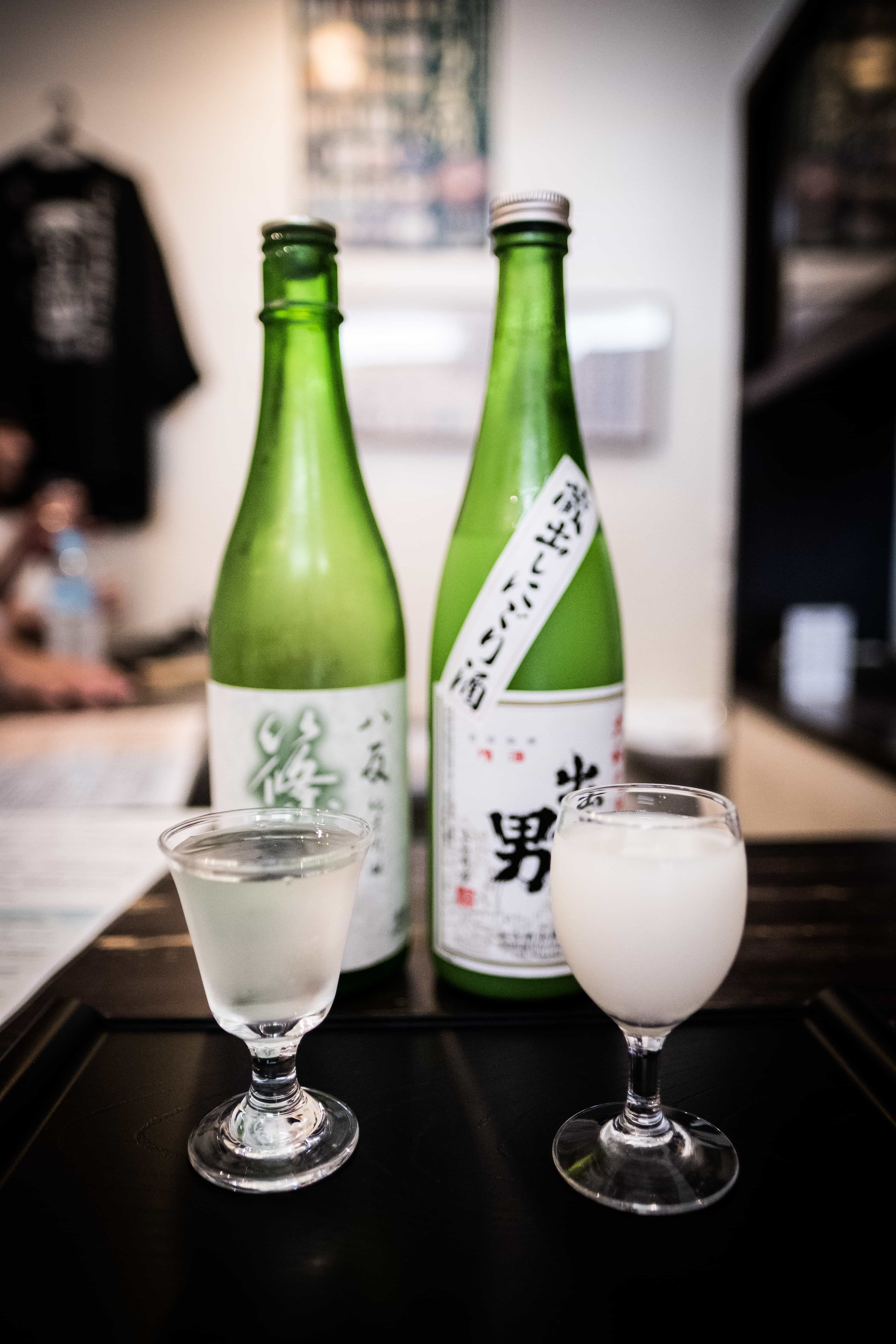
Generally speaking, cheap sake is warmed to mask the taste, while fine sakes are slightly chilled to savor the flavor. An average sake is very affordable in Japan and can be enjoyed at any meal you have out.
We love to have it at an Izakaya (Japanese pub). You can also find it in the liquor section at the grocery store and get yourself a whole bottle for between 800 and 2000 yen. Don’t bother picking out the best one by reading the labels; it’s virtually impossible unless you speak Japanese. My best advice is to pick the prettiest bottle and go from there, or you could always test out your language skills and ask someone!
Don’t forget to bring some home!
6. The Free Green Tea!
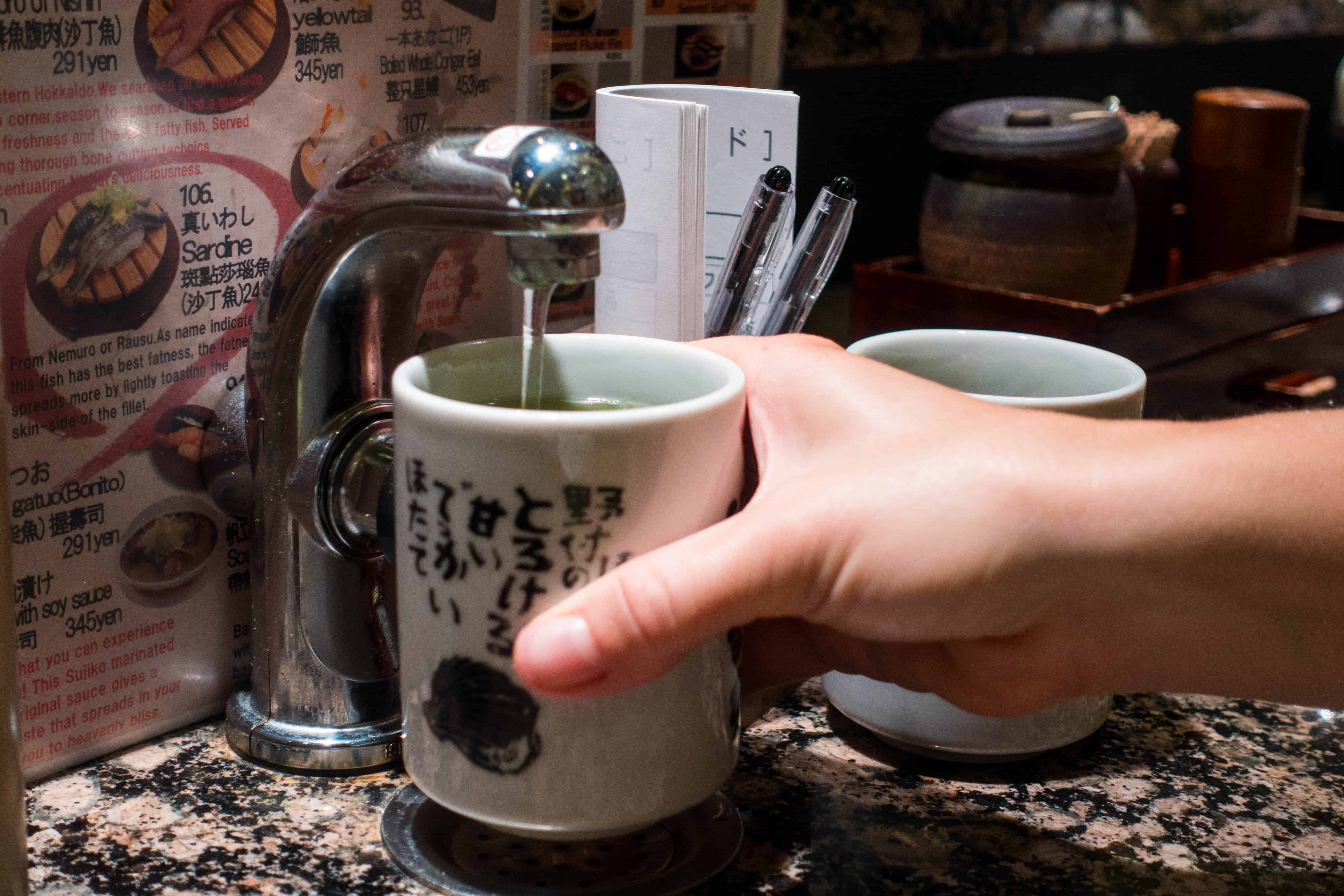
I’ve never visited any Japanese sushi restaurant and have not been offered complimentary green tea, and I love it. My favorite is the DIY sushi conveyor belt restaurants that provide green tea powder in front of you, with your own cup and a hot water dispenser at your seat. Drink as much as you want. In case you missed it – Green tea has significant health benefits like improved brain function, fat loss, and a lower cancer risk.
7. The Matcha
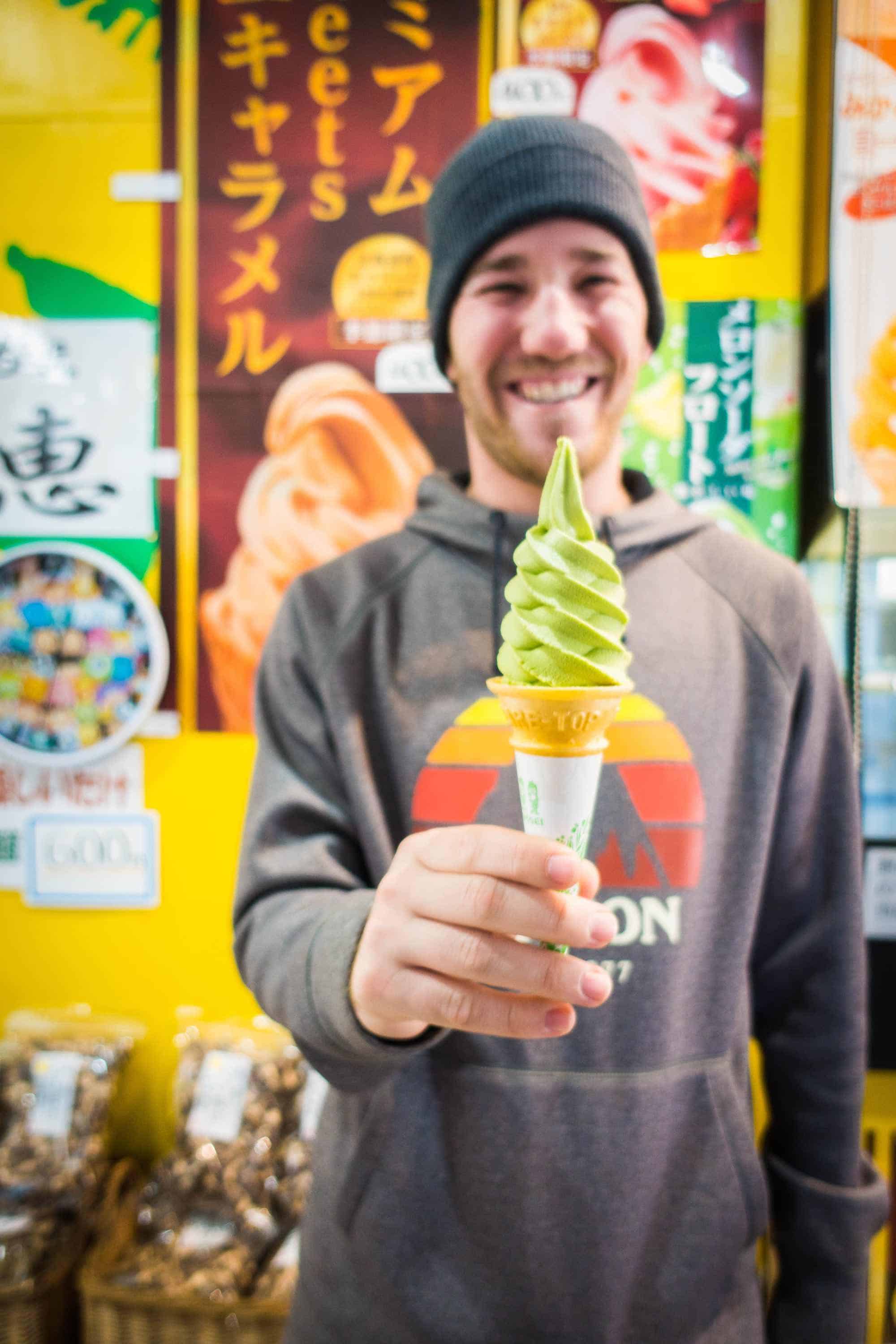
Matcha is a finely ground powder from green tea leaves. The finished product is a bright green powder commonly used in traditional Japanese tea ceremonies and in many other food items in Japan. It’s delicious and can be drunk with milk or water – hot or iced. Matcha is slightly sweet, vegetal, and nutty – great to have with sushi, poke bowls, or other sweets.
While matcha is a premium product usually served at hip cafes and vegan restaurants outside of Japan, you can find it everywhere in the country. Matcha ice cream, matcha soba noodles, matcha pancakes, and matcha candy are a huge craze.
There are also many health benefits of Matcha too. It’s packed with antioxidants, boosts your metabolism, enhances mood, burns calories, and calms the mind. Oh, and it’s green and tastes good. Win-win-win!
8. Japanese Toilets
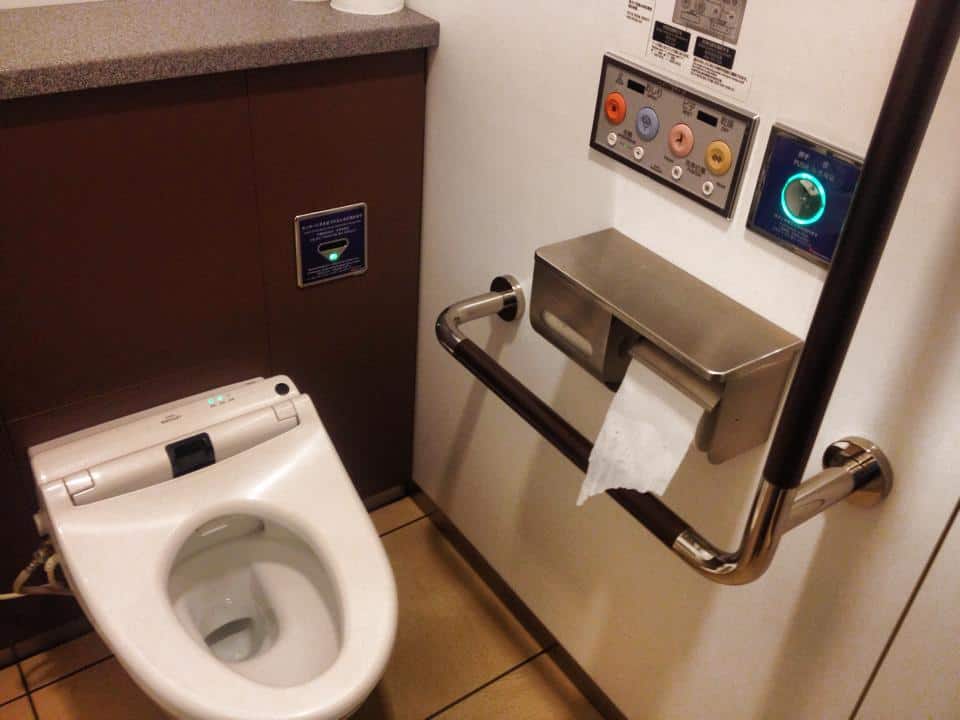
I’m not sure there is anything better in this world than a Japanese toilet. Yes, I just referred to a toilet as the best thing in the world, and you likely will, too, the first time you sit on a warm Japanese toilet seat. Don’t worry. A Japanese toilet is nothing short of hygienic.
They are almost fully automated, so you don’t have to do anything – not even wipe. I’ve yet to sit on a toilet in Japan that isn’t heated – which feels lovely on a cold winter day.

It doesn’t stop at the heated seats; they have a spray function for your rear and front side for the ladies, along with an air dryer. Also, they often come with sound effects, so no one will hear you doing your business.
I know it may not sound like much; even writing this, I realize that I am raving about a freaking toilet, but wait until your first time on one, then circle back with me.
9. The Tidiness

The Japanese take cleanliness very seriously, and this is apparent everywhere. I just mentioned how to clean going number two could be, but toilets aside, Japan is a spotless place.
Good luck finding many trash cans on the streets, but that doesn’t mean you’ll find a lick of trash anywhere. The Japanese people are mindful of their impact on others and are always expected to pick up after themselves.
Hotel rooms? Spotless. Public bathrooms? Actually pleasant in Japan! Bus drivers, police officers, train conductors – all wearing gloves. If one is sick, one is expected to wear a face mask out of respect for others. And don’t forget to take a ride in a taxi cab in Japan – it will be the cleanest you’ve ever taken a journey in.
10. The Geisha
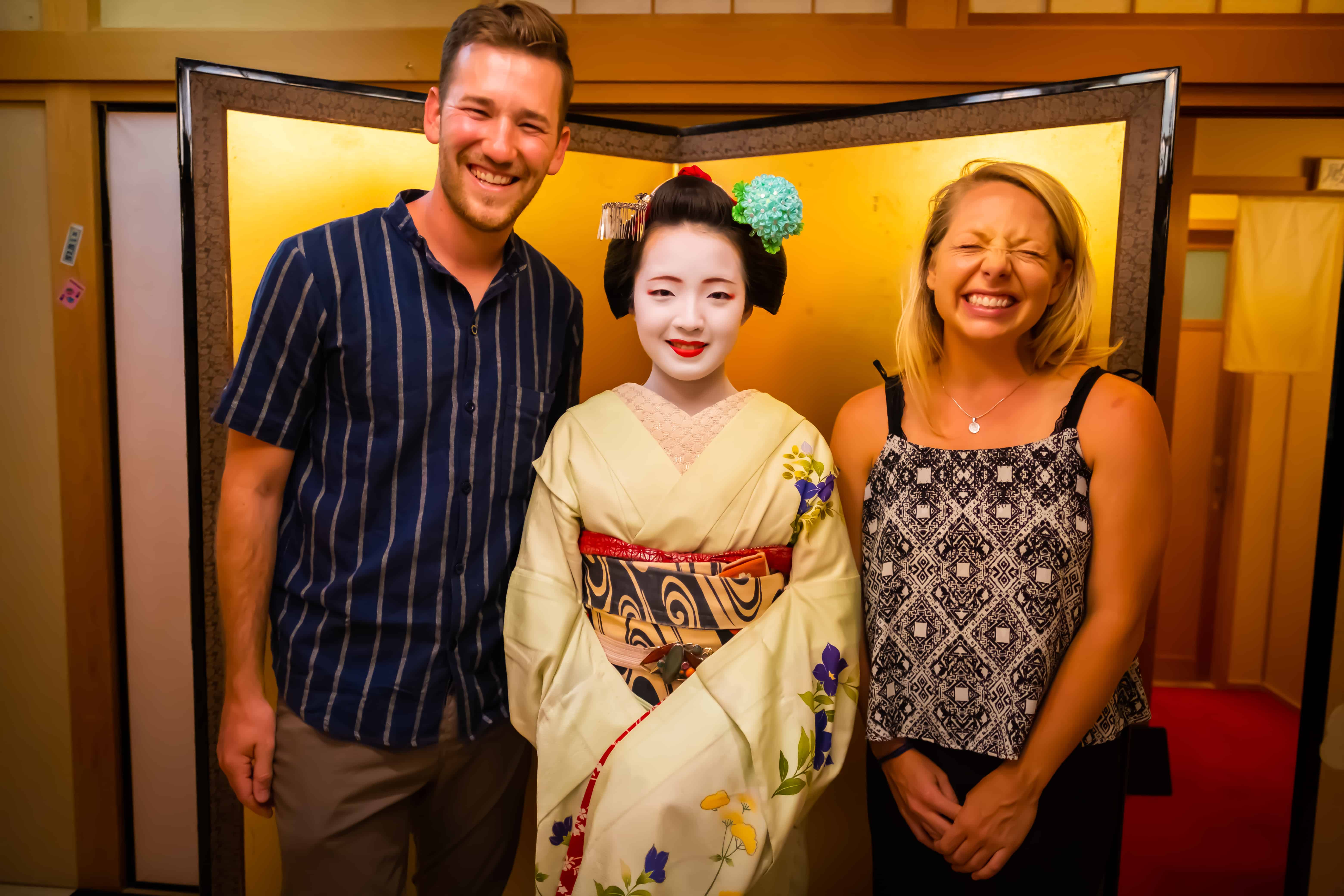
There’s a preconceived notion that geisha are prostitutes, which cannot be farther from the truth. A geisha is a highly skilled and trained professional artist. She is a female entertainer performing different forms of Japanese art and performances.
Hiring a geisha for a private event is not cheap and is typically done at an ochaya (tea house) or a ryōte (Japanese restaurant). Prices usually start at ¥50,000 and up for a geisha or maiko (apprentice).

If hiring a geisha is not in your budget, see if you can spot them around the city. Gion, in Kyoto, is the traditional geisha district in Japan, and it is here that you stand the best chance of seeing one going to or from an appointment.

I was lucky enough to be in Kyoto during the Setsubun Festival (the day before the beginning of Spring) and could see a few geiko and maiko, which is how I snapped some of these photos. On my last visit to Kyoto, we booked a dinner at Enchanted time with Maiko.
11. The Internet
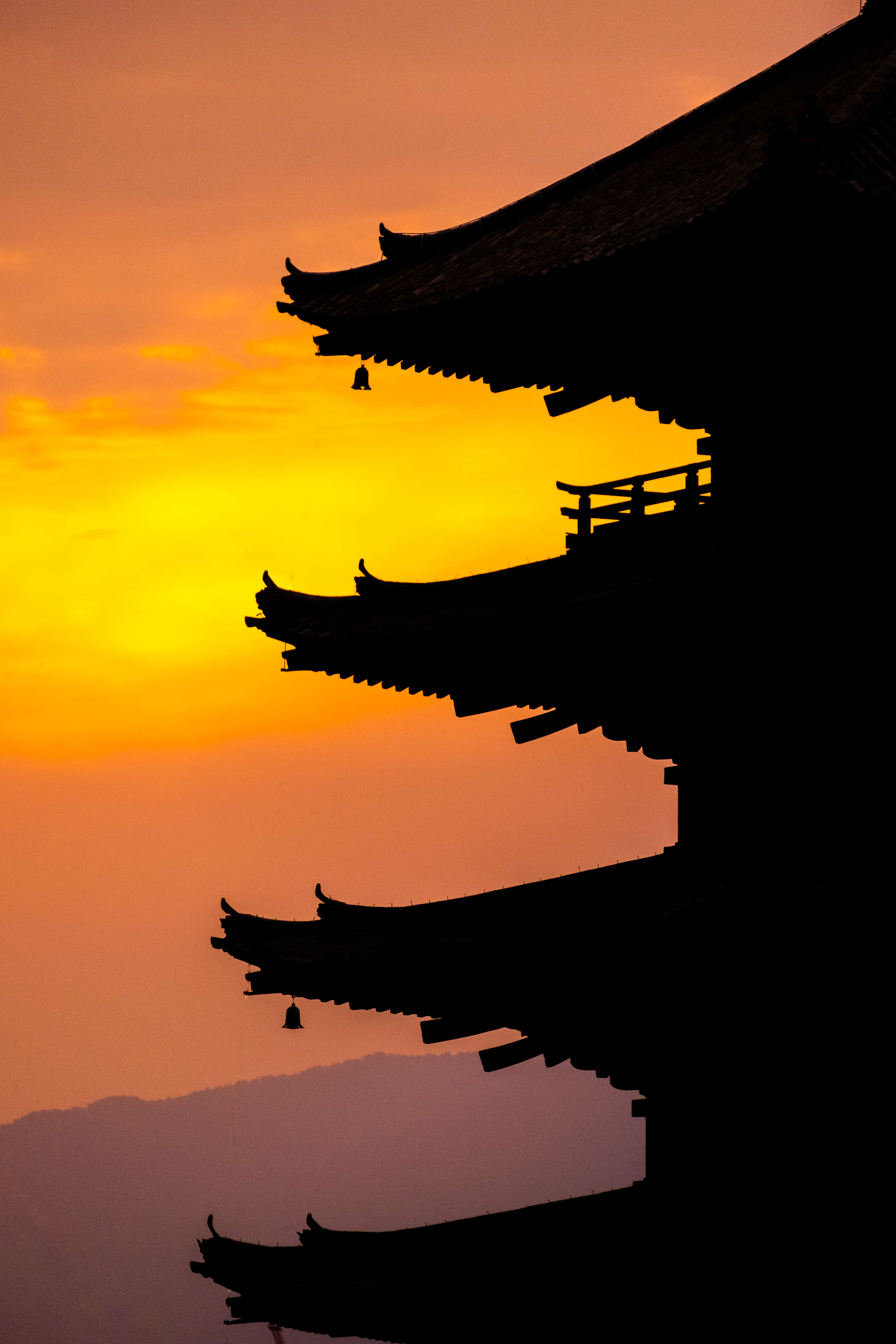
This may not matter to everyone, but as someone who works online, the internet is one of the best reasons to visit Japan. The Asia Pacific region has some of the fastest internet connections in the world, and this rings true in Japan. Most of the places we stayed in Japan had at least 100 Mbps download speeds!
I’ve never had that kind of internet anywhere in the world unless I am at my home paying for fiber. Japan has you covered if you must stay connected and get work done.
12. The Kotatsu Tables

Leave it to the Japanese to invent the next greatest thing in the world (after their toilet, of course). I’m not talking about Nintendo or Sony, but a kotatsu table. A kotatsu table is a low table with a blanket/futon over it and a heater running under the blanket. It will keep you warm and cozy for hours on end, and in the wintertime, you will never want to leave this table.
I’ve yet to see a kotatsu table outside of Japan, although I have tried to make my own makeshift one at home (not nearly as good). If you see a kotatsu table somewhere when you are in Japan, grab a bottle of sake, a good book, and enjoy its warmth.
13. Tatami Mats
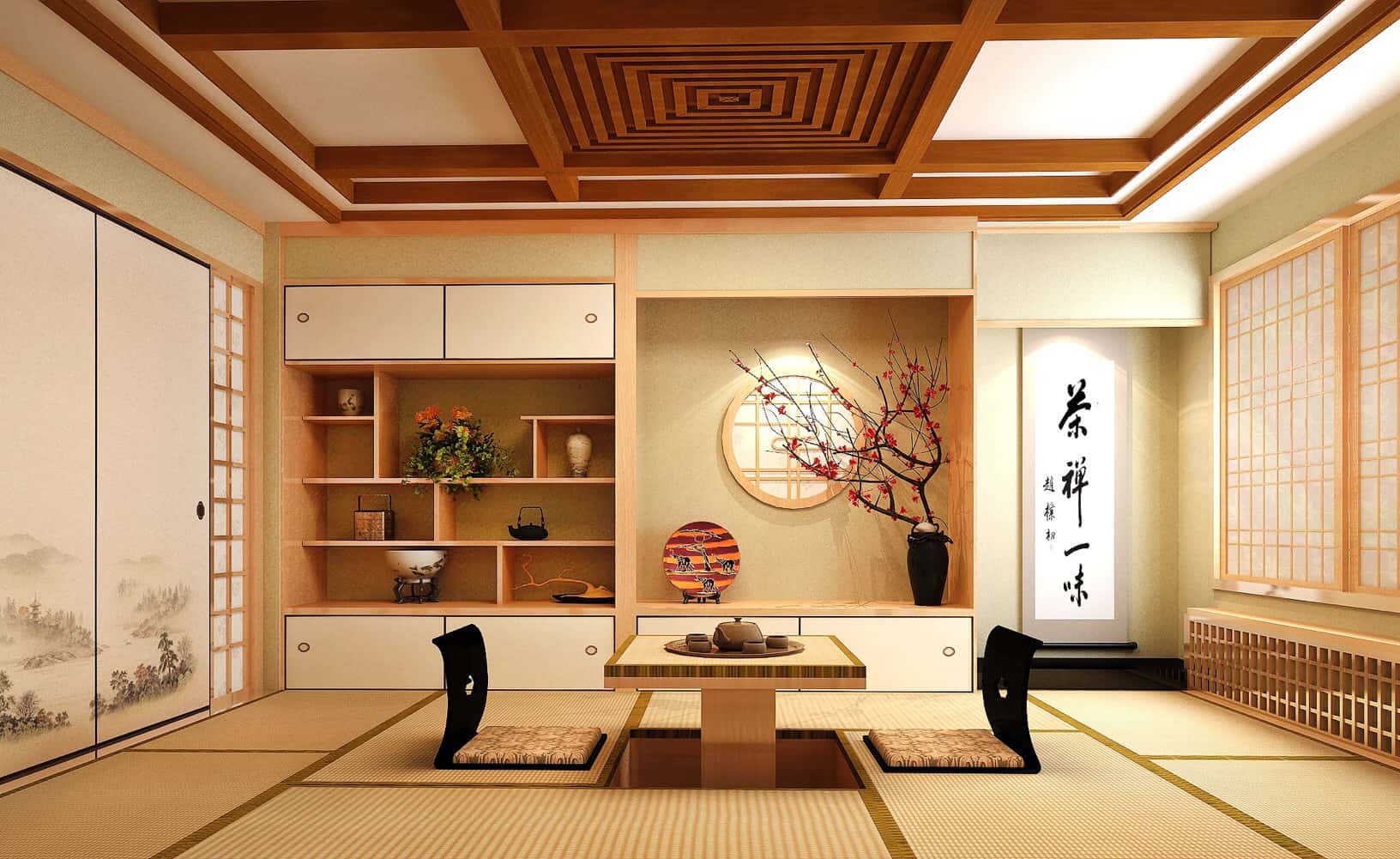
So why visit Japan? Have I not convinced you yet? If I haven’t, here’s another reason – a tatami mat! A tatami mat is a specific type of flooring used in Japanese rooms. It’s traditionally made using rice straw to form the core. You can find tatami mats in many Japanese homes and traditional Japanese inns (ryokans.) When you see them in your accommodation, you’ll find that a roll-out bed will be on the floor, and you will sleep right on the tatami mats.
If you are heading to Japan, I highly recommend seeking at least one Japanese ryokan to stay at during your trip. Not only do they look cool, but they’ve also played a role in Japanese culture since the eighth century!
14. The Culture

The Japanese have a very proud and unique culture, especially compared to Western Nations, and only closely related to China. It’s interesting to witness this different culture firsthand with a visit to Japan.
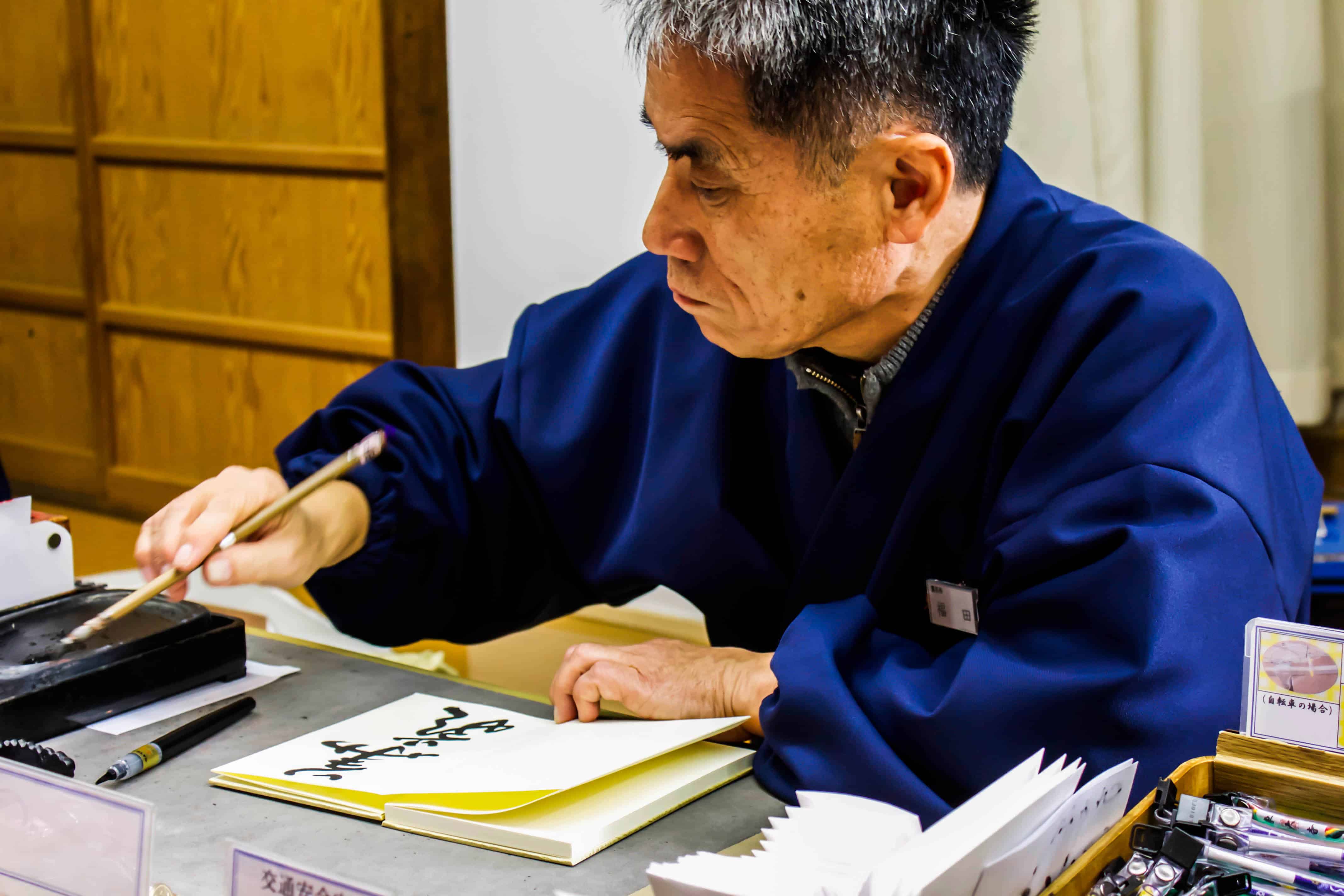
Japanese culture has changed drastically over all its periods. From the food to the clothing, performing arts, language, religion, and even written text, it’s easy to get mesmerized by Japanese culture.
I would try to explain more, but honestly, Japan is not one of those places you can’t understand from a blog, movies, or books. You need to go there to witness the day-to-day life of the area and breathe in the beautiful Japanese air for yourself.
15. The History

The Land of the Rising Sun has some pretty interesting history. It’s all fascinating from early Japan, ninjas, and samurais during feudal Japan, the Edo Period, and to WWII and post-war Japan.
You’ll see parts of its history, especially the more modern history, like sobering reminders of the destruction of war and humanity at the bombing sites of Hiroshima and Nagasaki on any trip.
16. The Nature

I bet you know that Japan is one of the world’s most populated countries. But did you also know that the forest still covers over 67% of Japan’s total land area? With such a high population, it’s hard to believe that Japan is one of the most forested countries on this planet.
It’s got mountains, volcanoes, breathtaking coastlines, caves, rivers, bays, and forests filled with brown bears, Japanese deer, monkeys, and beautiful wildlife. While over 126 million people live in Japan, most of them live on Honshu and in densely within city boundaries.

The Japanese live in harmony with nature. Since ancient times nature has been the beating heart of many tales and thousands of artworks. Nature is a symbol of enchantment, peace, and mystery. It is all traced back to the Shinto religion, which believes in the many spirits, kami, that exist in nature.
While the cities of Tokyo, Kyoto, and Sapporo are charming to visit, the countryside and rural areas keep drawing me back. You’ll have no trouble taking in nature when you travel to Japan.
17. The Kawaii

Sure, Japan may be the culprit of the Hello Kitty fad, but Japan has so much more adorableness. “Kawaii ‘ is the culture of cuteness in Japan, and it can be found everywhere. Remember Tamagotchi? Pikachu? TOTORO? Those were all a product of Japan.
Our last visit was around Christmas. The hot holiday commodity? A robot dog to love you. It was super adorable, and I almost wanted one (until I saw the ¥200,000 price tag).

That’s just one example, visit Japan, and you’ll see what I’m talking about. How about “Hello Kitty Lane” in the Chitose airport or the fact that almost every town, city, large business, sports team, school, region, or even laxative company has its own mascot in Japan? That last one is true…
18. The Pricing

One of the chief complaints I hear about traveling in Japan is how expensive it is to travel. Outside of transport, I find Japan quite reasonable. I’m not going to say it’s similar to Thailand, South Africa, or Nicaragua, but I would put it on par with places like Canada, Austria, or Italy. Still cheaper than countries like the U.K., Nordic Countries, or the United States.
Hotels and accommodation options are always a mixed bag. You can find reasonable ones, stay in hostels or capsule pod hotels. Or if you find yourself traveling during the high season, in resort towns like Niseko, or enjoying the more beautiful things in life, you will, of course, see higher prices.
I find excellent value in Japan (and the most critical part) is the food. One can easily have a nice Japanese meal out for under ¥2000. Remember the conveyor belt sushi that I mentioned? The best part is that you never have to think about an additional tip add-on, as it is considered rude to leave a tip in Japan.
19. It’s Safe!

Japan is one of the safest countries in the world. On a Global Peace Index, they rank number nine out of all the countries in the world. That is quite impressive given their colossal population size of 126 million people. Canada is the only country that ranks higher than them and is “close” in the population at 35 million people.
It’s one of the best countries to travel to for solo female travelers as people are respectful, and the chances of being hurt by violent crime are meager. Fewer than one person is murdered for every 100,000 in the population, compared to 4.8 for the United States and 44.7 in Belize. Japan has strict gun laws, a stable society, low inequality, and high levels of education.
Unlike many other parts of the world, or even my own home country, I feel safe in Japan walking alone at night as a solo traveler, and I have never felt preying male eyes on me. For the most part, everyone here minds their own business!
20. The Vending Machines!

The sheer amount of vending machines in Japan is impossible to ignore. I think I read somewhere that there are over 5 million vending machines in Japan, and you can get almost anything from them. Of course, there are regular things like Coca-Cola and shrimp crackers, but then there are books, batteries, bras, umbrellas, bottles of sake, heck, in some places, it’s even how you order your dinner.
There are several reasons Japan has so many vending machines. For one, it’s a cash-based society – perfect for vending machines. The labor cost is also exceptionally high, so you eliminate the need for a sales clerk with a vending machine. Japan is one of the safest countries in the world, and the thought of vandalizing a vending machine is almost unthinkable.
People are also busy here – Japan is a workaholic country. Why go into a 7-11 when you can hit up a vending machine. Vending machines offer competitive prices for basic products. So, don’t skip going to a vending machine in Japan, although it will be hard to avoid one!
21. The Seasons
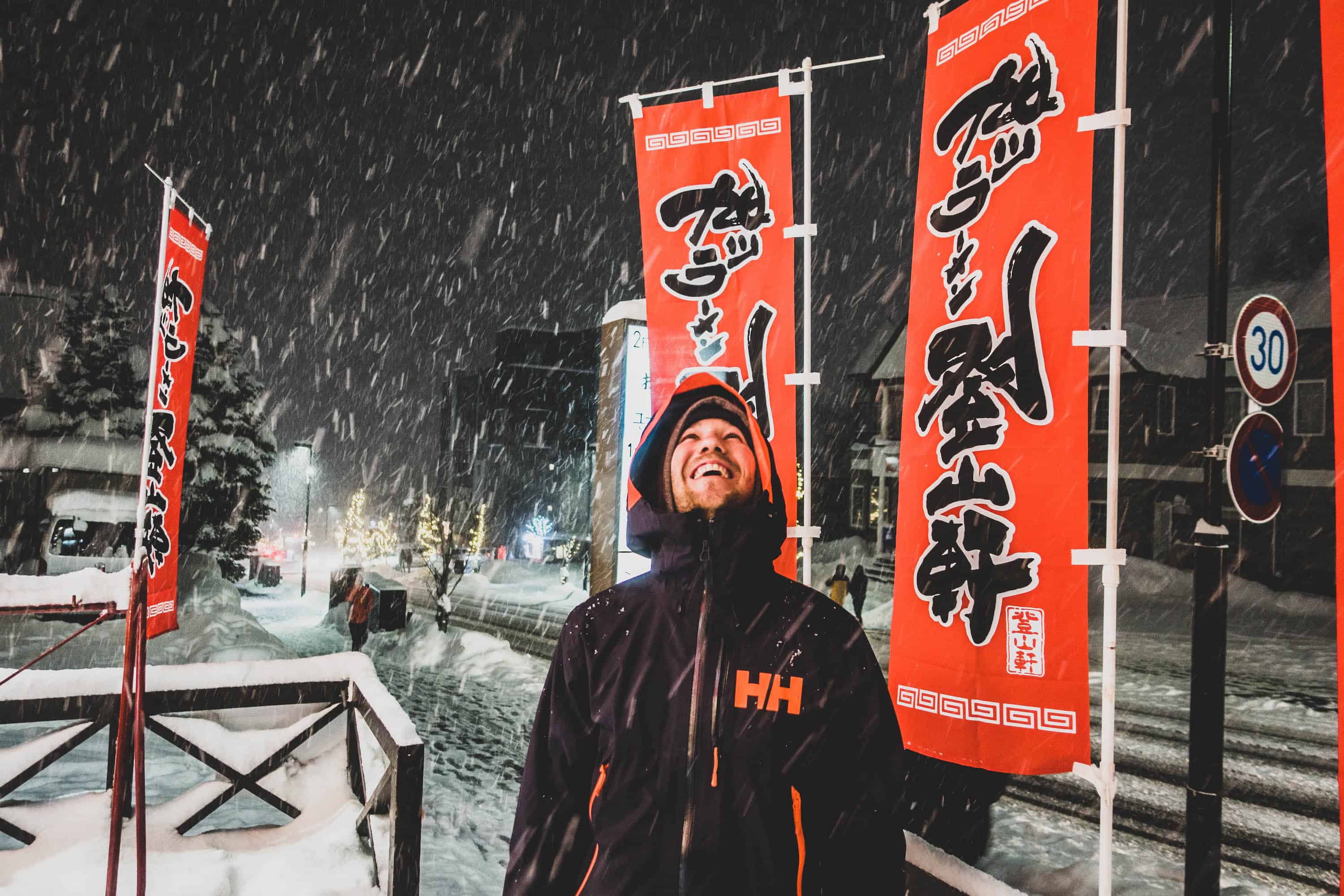
There truly is no wrong time to visit Japan. The country has four incredible seasons, each being beautiful in its own way. Late spring (March to May) and late autumn (September to November) are generally considered the best times to visit Japan. That’s when you can find clear skies and mild temperatures.

For winter lovers and snowboarders, it’s best to visit the northern regions and mountains between December and March. If you want to chase the cherry blossoms, the trees start to blossom in the warmer south in late March and will begin to fall from the trees after two weeks. This makes places like Kyoto a wonderland in April and early May.

During the fall months, you’ll see the leaves change, and everything turns brilliant colors. Then summer is always a favorite time to travel, and while you have long summer days, you may feel the humidity.
Our goal is to return twice a year. Always in the winter, because Japan has magical snowfalls and tourism is down, and then once again during the other seasons.
22. The Temples
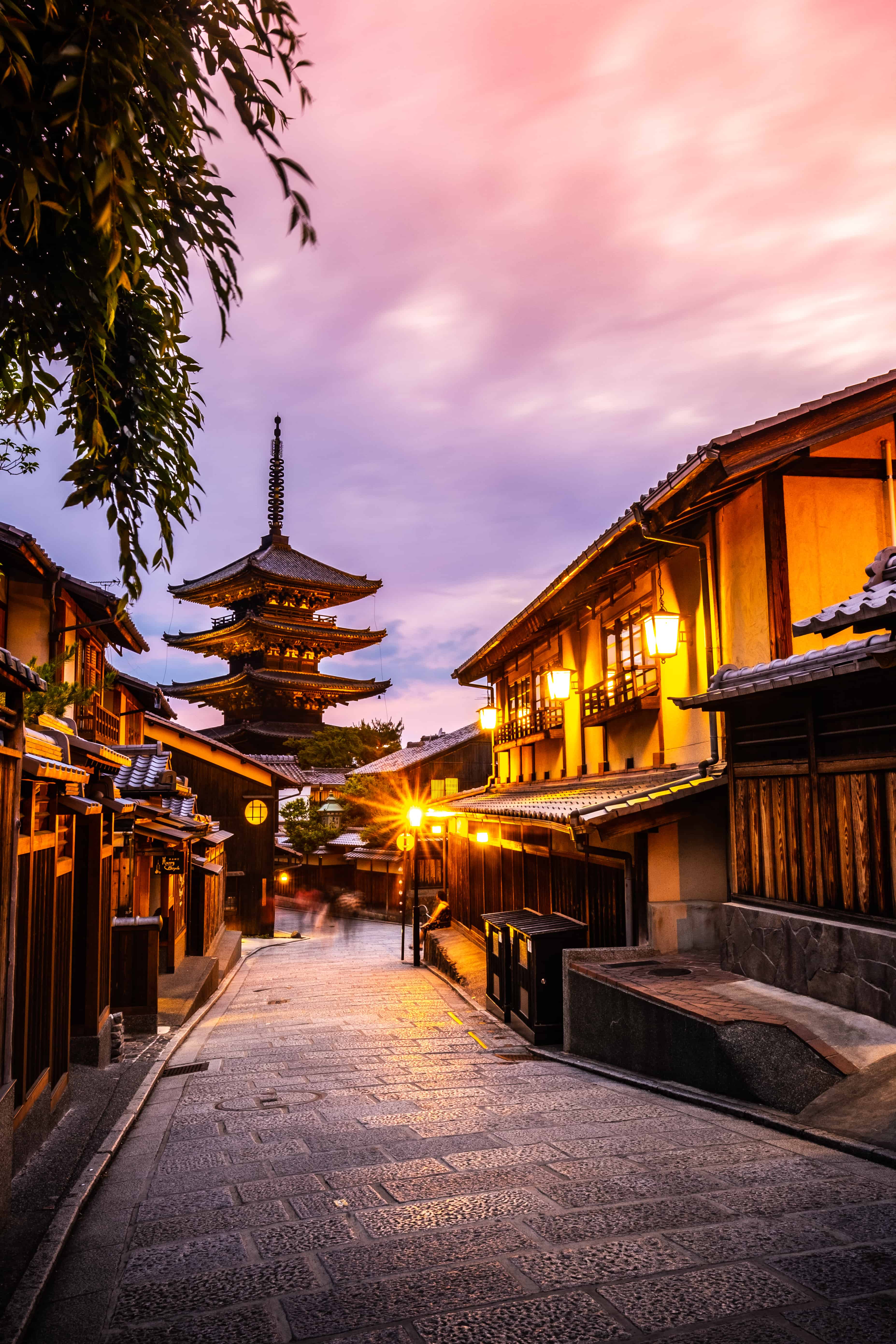
It’s almost impossible to know how many temples and shrines are in Japan, but the fact that Kyoto alone has over 2,000 should tell you something – you’ll be hard-pressed not to see a Japanese temple.
Taking time to properly explore and see some of these awe-inspiring temples while visiting Japan is a must. They are all so different and beautiful in their unique way.
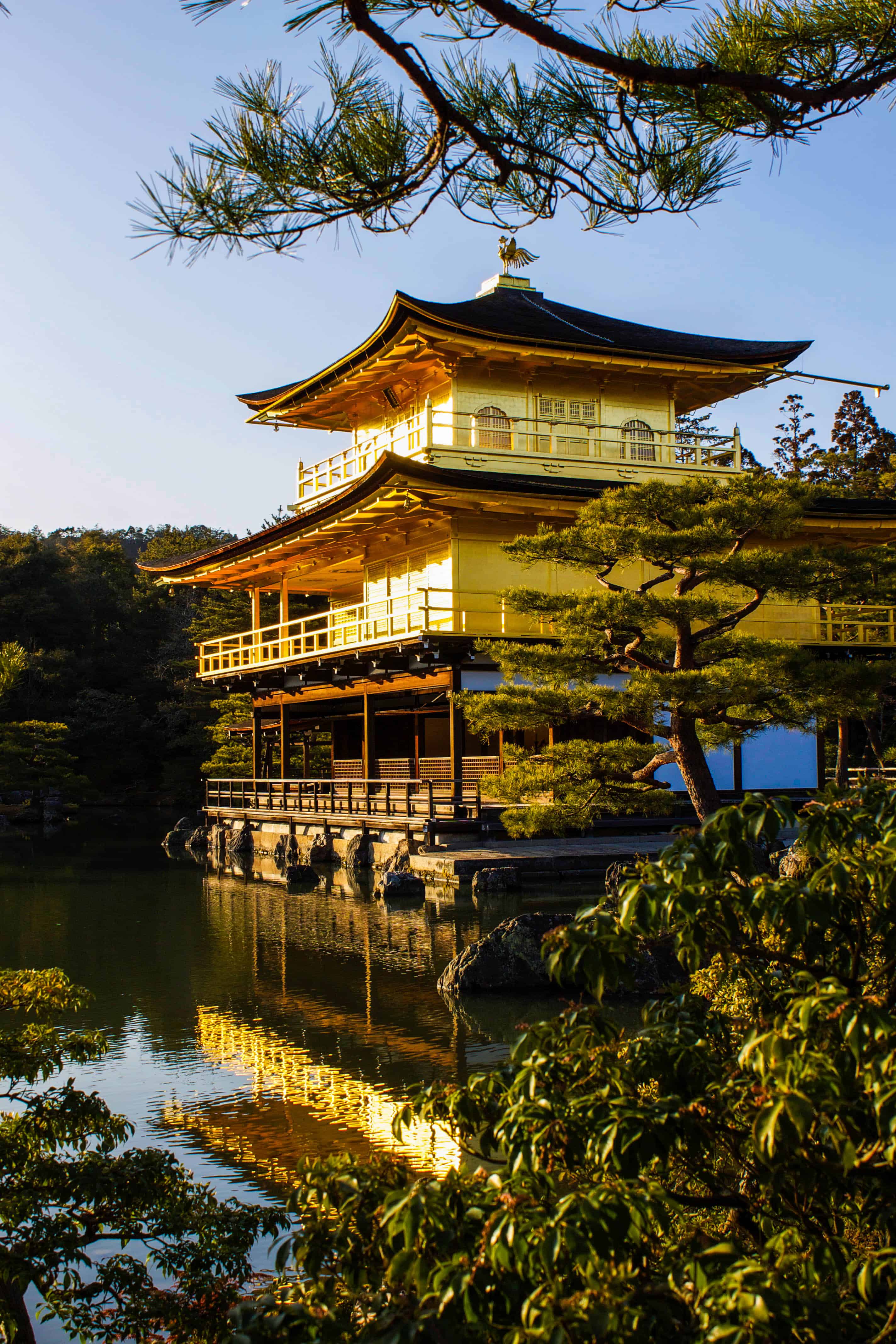
Some of these temples are over 1000 years old and obviously should be treated with respect and humility. My favorites are Senso-Ji, Kotoku-In Temple, and Kotoku-In Temple.
23. The Powder

Over the past ten years, the small town of Niseko in Hokkaido has risen to international fame in the ski world. This part of Japan receives epic snow dumps making it a powder paradise.

Although the slopes at Niseko are mellower than those in the Swiss Alps or North America, the snow is some kind of dry white magical fluff. To sweeten the deal, the snow doesn’t seem to stop falling on the ground between the months of December and March.
But it’s not just Niseko; it’s all over Hokkaido! We found great powdery goodness in the small town of Furano, and ski resorts like Kurodake and Rusutsu Resort are significant highlights for any skier or snowboarder.

You’re not limited to Hokkaido, though, as the awe-inspiring Japanese Alps also receive plenty of snowfall on the island of Honshu at resorts like Hakuba and Nozawa Onsen.
If you are a diehard ski-bum, you better add Japan to your list of bucket list destinations — it is epic!
24. The Transport
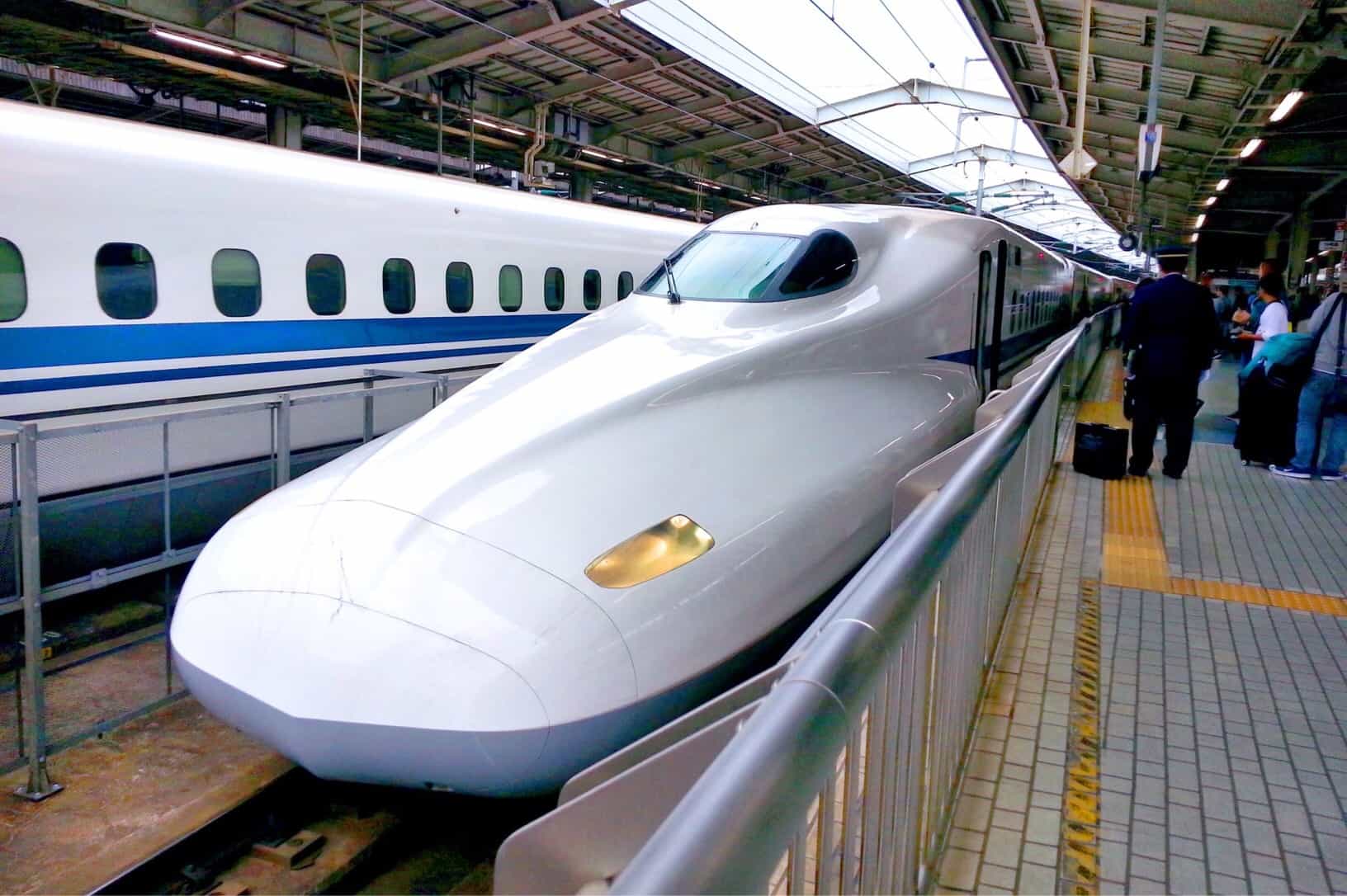
Japan has the world’s best transport system. Especially around the big cities like Osaka, Tokyo, and Kyoto. Getting around is rarely an issue with an efficient rail network, which is the best way to get around Japan.
While transportation is typically expensive, I purchased a JR pass when I first traveled to Japan. A JR Pass is only available to foreigners and essentially works like a Eurail pass in Europe. A pass is purchased for a set amount of time or rides, depending on your needs and destinations. It’s best for those who want to hit more than two or three destinations in Japan, but you will have to do your research to see what is best for you.
I had a two-week unlimited rail pass and traveled rapidly to places like Kyoto, Nara, Hiroshima, Miyajima, Naoshima, and so many more cities and towns. Well worth the investment. The most reliable way to check train fares and times is on Hyperdia.
It’s important to note that Japanese trains leave on the dot of their scheduled time. Don’t believe me? Read this article. To be Japanese is to be punctual. If you are not punctual, you will 100% miss your train.
Also – Japan is where you can ride the famous Shinkansen train – or “bullet train” – which is an experience as the train rockets across the country. Note that not all trains in Japan are Shinkansen trains.
25. The Efficiency

I’ve never been in a more efficiently run country than Japan. I’ve already touched on the transport and being on time, but there are many other aspects where I think, “Why can’t the United States operate like this – it makes so much sense.” Pay any visit to Japan, and you’ll see how a disciplined and rule-based society operates.
26. The Rules

Japan has a lot of “rules” that may seem strange or strict to the average Western traveler. I put rules in quotations because, while many times, they are not laws or set standards, it is advisable to respect all the social norms and customs.
Things I always notice as soon as I am in Japan are:
- Be on time. It is very disrespectful to be late in Japan.
- On an escalator, there is a side for walking and a side for standing. This is the same in many other places, but it is socially enforced in Japan.
- Don’t hesitate to bow. Men bow with their hands to their sides. Women bow with their hands together in front.
- Present business cards with two hands.
- Never stick your chopsticks in a rice bowl, as that is how rice is offered to the dead.
- Never wear your shoes inside. Slippers will be offered and are for indoor wear.
- It is considered impolite to leave a tip.
- Respect the elderly.
- Don’t litter. You are expected to clean up after yourself and take care of your own trash and the mess you create.
- Always wash before you enter an onsen. Always.
- Avoid speaking loud or causing a scene in public.
- Do not point your finger at anyone.
I could probably make a whole post about Japan’s cultural norms and expectations, but the best thing to do is go and experience it all for yourself and adapt. If you do break a rule, it’s okay. The Japanese understand that you are a foreigner and may not know their rules.
27. The Onsens and Sentos
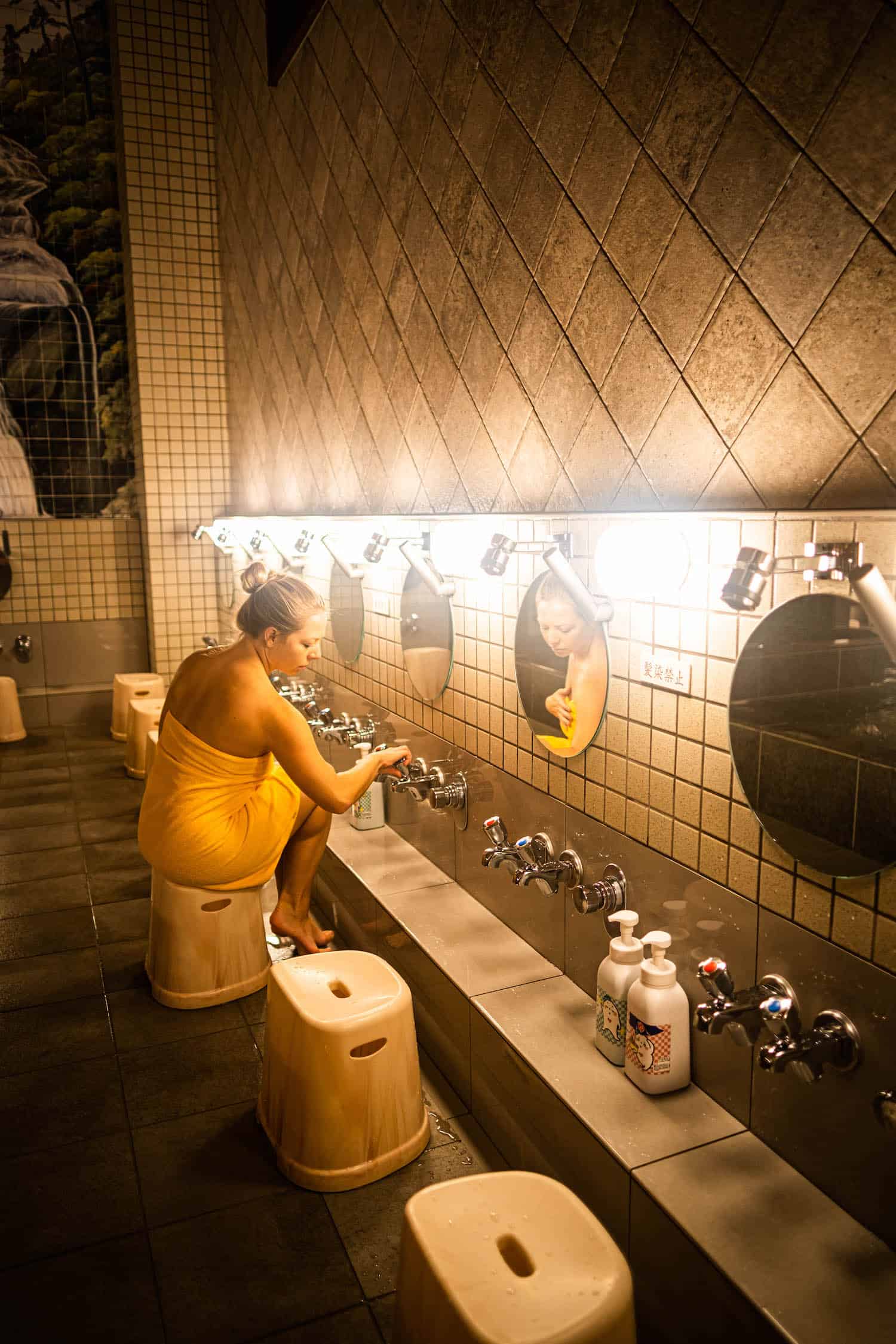
Visiting a Japanese Onsen should be at the top of the things to do in Japan! An onsen is a Japanese hot spring where visitors are separated by sex and can soak naked in the warm water, usually outside. It’s incredibly relaxing, especially during the winter, and a unique cultural experience. As Japan is a volcanically active country, thousands of onsens are scattered throughout.
Don’t be shy! Everyone in an onsen is naked, and no one cares. You may not wear a bathing suit inside an onsen, and some traditional onsens even ban tattoos, so check if you have tattoos. Onsens are separated by sex, and you must wash your body before entering. And many times, you will also wash afterward to remove the minerals.
Japanese Bath House: A Foreigners Guide to Sauna & Sentos
28. The Convenience Stores

If you find yourself in a pickle and it’s too late or too early to score some food at a restaurant – never fear! Convenience stores can be found on almost every block in Japan. Lawsons, 7-11, and Family Mart are the three main ones you will see, but a few others are also around.
Convenience stores in Japan are unlike other convenience stores around the world. You can get anything you want at them, including ready-made Japanese meals like Udon and Tempura. You can also find sake, plum wine, whisky, iced coffee, pastries, matcha balls, and pornographic magazines. 😝
29. The Strangeness

In the end, one of my favorite reasons to visit Japan is its strangeness. Japan is a peculiar and unique place to visit (in a good way!). I often say that there is the whole world, and then there is Japan.

It’s the result of the island being so shut off from the rest of the world until recently. Japan is one of the only countries in the world that a Western Nation has never controlled. It has a long history of independence and is far away from just about anywhere besides China, Korea, and a few other Asian nations.
You can go there and almost feel like you are in another world. Japan has things like maid cafes, seven-story arcade shops, robot cafes, cat cafes, a bunny island, a fox island, toilet only slippers, more vending machines than people, and just endless amounts of different gadgets and business ideas. I don’t think it’s possible to ever get bored in Japan.

Hopefully, this list answers your question of why visit Japan! It’s an amazing destination with so much to offer!
Getting Around Japan

Transportation in Japan could be your number one expense, depending on how much you plan to bop around the country.
Rail travel in Japan is simply expensive. The faster the train, the higher the ticket price, especially if you’re traveling on the famous Shinkansen (bullet train).
You can lower your cost significantly by buying a Japan Rail Pass – only offered to visitors of Japan. The JR Pass is something you will typically want to think about purchasing before your trip, and you can pick it up once you arrive at a JR station. From there (depending on your type of pass), you can travel Japan freely on JR trains. They have different types of passes according to where you’ll be and the length of your trip.
The first time I visited Japan, I wanted to see as much as possible, so I bought a 14 day JR Pass for less than $400 and traveled around Japan every two to three days.
The second time I visited, I was only in Hokkaido doing minimal travel as it was a ski trip, so I decided to pay for my train travel outright.
The third time I visited, I also declined a JR Pass as I was doing minimal travel, but after spending ¥12000 on one round-trip train journey from Osaka-Shingu, I think I would have been better off with a designated rail pass.
When planning your trip to Japan, you should consider where you visit and the distances you’ll cover. Long distances may require high-speed trains and will generally cost more than a short one-hour journey.
If you are traveling to one region of Japan, it may or may not be worth it for you to purchase a rail pass before. If you want some spontaneity in your Japan travels, a rail pass is a way to go.
We’ve also found that MOST (but not all) buses and subway rides in Japan charge you by distance covered. It is not a flat fare.
Most importantly, keep your bus, train, or subway ticket on you throughout your journey. You will need it to exit the station.
A few examples of our transportation costs:
- Furano to Niseko Ski Resort Resort Liner Bus: ¥5500
- Kyoto city bus: ¥210
- Kyoto-Nara train: ¥490
- Osaka city subway ticket: ¥200-350
- Osaka-Singu Rapid Rail Service: ¥7000
- 14 day JR Pass: ¥46,432
- Shingu-Yinomine Onsen Bus: ¥1500
Car Rental in Japan
If you want to explore Japan on your own terms, sometimes a car rental can be a good option. Car rentals can be had for as little as $40 a day.
Remember that you need an International Drivers Permit to rent a car in Japan. Unlike many countries that let you rent a car off just your license (as long as it uses the Latin language), in Japan, you need to go the extra mile.
An IDP is different from your regular license and must be certified beforehand in your home country. For Americans, this can easily be done at AAA for $20.
No car rental company will rent to you in Japan unless you have one, so make sure it’s done before you attempt to pick up your rental.
How to Save Money in Japan

Take Public Transport
You may think that the trains in Japan are expensive, but they are nothing compared to the price of taxis in Japan. If you step into a taxi, be prepared for a costly fare.
No – the Japanese are not trying to rip you off; that’s just the fare for traveling via taxi in Japan. It’s also important to note that public transport stops around midnight in most cities, even in Tokyo. If your flight lands late at night, it’s best to plan how you get to your accommodation.
Stay in Guesthouses
If you don’t want to stay in a hostel, the next best thing is a Japanese-run guesthouse. I found them to be a great value and almost always busy. Yes, most hotels in Japan have crazy small rooms. We book a lot of our accommodation on Airbnb. You can see our top Airbnb tips if it’s your first time booking.
Cook Your Own Food
If your accommodation has a kitchen, it’s best to use it. We saved a ton of money this way in the expensive resort town of Niseko and made our own meals every night.
The grocery store provides great value, especially on Japanese food like noodles, rice, and vegetables. You can even find food to cook with at the convenience stores.
Check out the ¥100 shops
A ¥100 shop is equivalent to an American dollar store. You can find almost anything at them, so it’s always worth it to scope some out!
Eat your fresh fruits and vegetable before you get to Japan
Fresh fruits like strawberries, blueberries, and even oranges are pretty expensive in Japan, so try to avoid them if you’re on a budget. I found a lot of vegetables besides mushrooms and a few leafy greens to be higher than average as well.
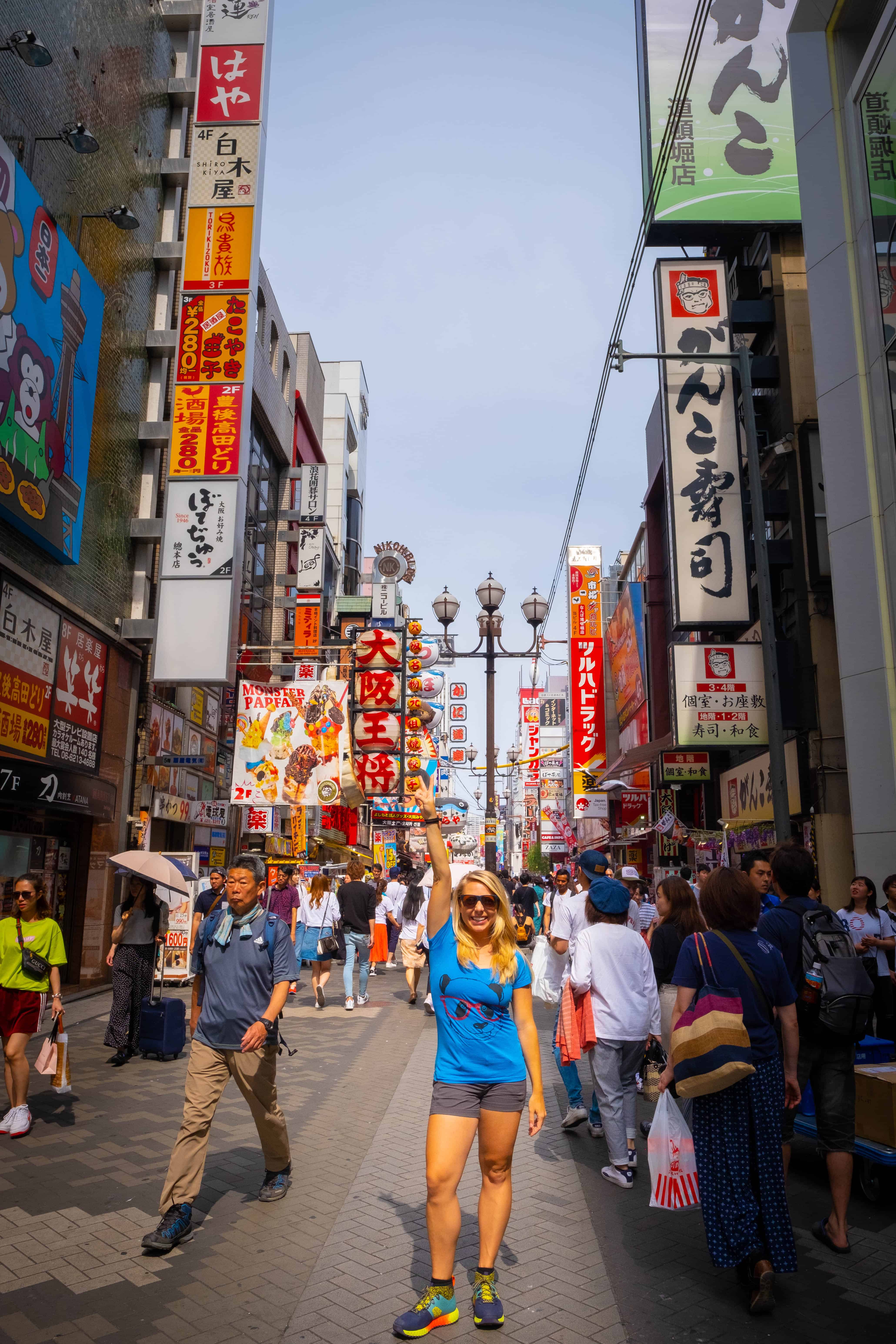
Frequent Convenience Stores
You can get almost anything you want at Lawsons, 7-11, and Family Mart. They are open around the clock and have things like pastries, coffee, pre-made meals, toiletries, and sake.
How Much Does it Cost to Travel in Japan?

So how much Japan spending money per day should you have? Besides the pre-trip expenses like airfare, luggage, and any Japan packing list items you’ll want to buy I believe you can get by in Japan for ¥7000-10,000 a day.
Actually, to prove this, I tracked all our expenses for one day out in Osaka. We were not frugal but not lavish in our spending either. We ate what we wanted to eat, did what we wanted, and had a fantastic time!
- Breakfast Pastry: ¥230
- Train to city: ¥210
- Coffee: ¥420
- Okonomiyaki lunch: ¥1030
- Pinball: ¥200
- New Clothes: ¥2600
- Soft Ice cream: ¥440
- Coffee: ¥550
- Train to Osaka Castle: ¥230
- Osaka Castle: Free
- Train to dinner: ¥180
- Ramen with beer: ¥1235
- Accommodation: ¥4000/pppn
- TOTAL: ¥11,325
Now you definitely could do it a lot cheaper than this or for much more. Many things on the above list are superfluous, but I like coffee, ice cream, a beer with my meal, and the occasional shopping spree.
When I first traveled to Japan for the first time, I was on a backpacker budget. I visited there in February (off season), spent my nights in hostels, ate basic meals from 7-11, and only indulged in a few cheap excursions – but for the most part, stuck to the free temples and just walked around and enjoyed the view. I had a fantastic time on less than the ¥6000 a day.
You can travel cheaply through Japan if you are determined. At the same time, if it’s your one big trip to Japan, I don’t think you should be afraid to spend money on food and experiences you can’t get back home.

Japan Travel Planning Resources
- Packing Guide—Check out our Japan Packing List to help you pack your bags and ensure you leave nothing at home.
- Protect Your Trip — We don’t travel without travel insurance, nor should you. You never know what can happen while traveling, so it’s best to be prepared. HeyMondo provides excellent short-term and long-term travel insurance plans.
- Travel Adapter – Find a good adapter to keep your electronics charged. Otherwise, you may be paying for a cheap one once you land. Purchase one here.
- Book an Experience – See all the best experiences and tours in Japan here.
- Get a Japan Rail Pass (Buy Here) – They make traveling around Japan much easier and cheaper.
- Travel Shoes – Allbirds are the ultimate travel shoe. They are sustainable and last forever while looking good.

